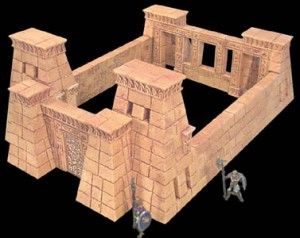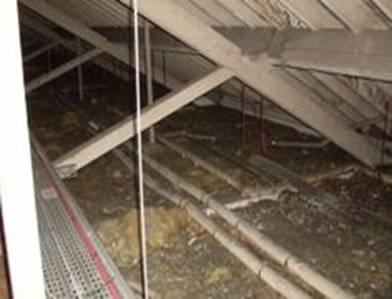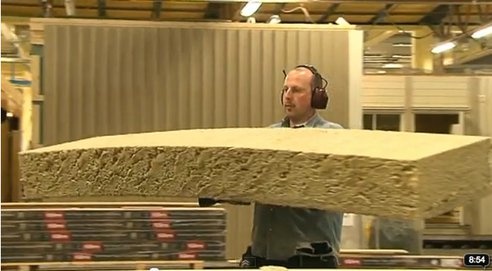Insulation Tradition
by Mark Row
 The Origins of Insulation
The Origins of Insulation
Although insulation is a common occurrence nowadays and there is not a home that is not somehow insulated, believe it or not, it is not a heritage of modern age. People all around the world, centuries ago, have tried to find alternative ways of additionally warming up or cooling down their homes throughout the year. Even though there were no modern industrial insulation materials available, many of the products you can find today actually date from the ancient Greece and Rome. Some of them were altered and upgraded, but their basic function remained the same – to improve thermal regulation indoors. The only difference today is the fact that proper insulation has many other benefits that were not considered earlier, such as energy efficiency and environmental awareness. In order of understanding the origin of insulation, we herewith offer you a bit of insulation tradition.
Ancient Times
As mentioned, ancient civilizations did not have the industry that could develop modern forms of insulation, but rather tried to use some alternative ways of regulating and stabilizing the temperature within their homes. One such way used by the ancient Mayans was implemented in the construction phase, when thicker walls were built up, all in order from keeping the heat and cold from penetrating in. Another example of thermal insulation can be found in Egypt where people opted for smaller window and door openings so that the sources of heat loss could be minimized.

Probably the first insulation method that remained popular nowadays was applied by the Greeks and later on continued by the Romans and it included building cavity walls. Namely, walls consisted of two parts, the inner and outer one, whereas the hollow space in between had the ability to trap the cold or heat, even moisture thus disallowing it to spread to the interior. The same construction technique is used today with the only difference that cavities are now filled with some insulation material (most commonly spray foam or blown-in insulation) in order of improving its efficiency.
Some ecological and natural insulation products, such as cork and fabric, were also used, not only to seal the gaps in walls and windows, but also to use around hot pipes in order of preventing them from radiating heat and thus additionally warming up the space. Romans also dedicated a lot of attention to insulating windows by hanging heavy curtains and drapes or using animal skins hung onto the walls in order of absorbing the excessive moisture and keeping it away from the walls.
Industrial Revolution
Industrial revolution has brought many technical and technological novelties into our lives, but also developed some new forms of insulation. Although materials used were efficient in the words of thermal regulation and energy consumption, it was not until years later that it was discovered that the materials used had a very serious impact on human health. We are talking about asbestos insulation which was widely used up until the 70s and 80s when it was finally band due to the fact that many researches have proved it to be very dangerous and causing lung cancer. Since the material was widely used, it can still be found in older homes and people are still struggling with its removal, especially because it is sometimes better to leave it intact and if it has to be removed, it must be done by a professional, which is just an additional expense.

Due to the fact that asbestos was considered dangerous, the history of insulation continues with glass wool or fiberglass insulation, as an efficient way of insulating various areas within your home. However, even glass wool had some impacts on human health, causing skin and eyes irritation, why protective equipment should be used during installation. On the other hand, its ability to withstand high temperatures, density and texture has made it one of the most popular materials nowadays.
Modern Times
As before said insulation has much broader application nowadays. It is not only used for thermal regulation but also for improved energy efficiency and lower carbon footprint. In other words, adequate use of insulation can save you much money on electricity bills and also allow you to preserve our mother nature. Not to mention that modern insulation materials offer not only thermal insulation but also sound insulation, taking care of increasing problems with noise pollution.
Also, due to the increasing environmental concerns, some alternative eco-products have been developed, such as cheaper but less effective denim or cork insulation or materials such as sheep wool, made from fine fibres and usually packed into insulation rolls or slabs, to ease the installation process. The industrial development allowed innovative manufacturing processes where various materials with substantial insulation properties are usually subject to special techniques which give them some very useful characteristics such as fire and moisture resistance, high density and resilience etc. Perfect examples of such materials are most certainly rigid insulation boards, reflective foils and rock wool which are among the most popular and most commonly used materials due to their properties and wide application. They can be seen in almost any part of residential and commercial buildings, starting from attic and basement spaces to walls, floors and ceilings. Regardless of the material you opt for, it is always a good idea to only get high quality products made by renowned manufacturers, properly certified. All this and much more can be found right here at Insulation Shop so do not hesitate to contact us in case you have any doubt or question on insulation tradition or any other insulation related topic.

For more information on traditional and modern insulation materials, please read related blog articles and product descriptions on our website. If you have any questions please post them in the comments below.

























































































































